vertu client services for constellation T
by: Designboom - Weblog, 2011-10-23 13:30:00 UTC
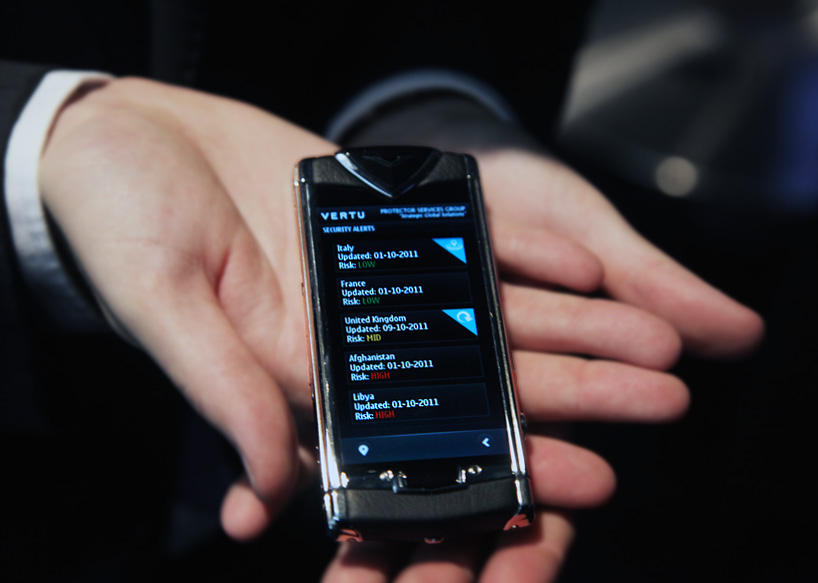
client service excellence is providing a personal
assistant service for each user ?
here is a short reportage what world's most exclusive smart phone producer vertu has to offer.
read more
Tomorrow's Value Rating 2011
by: Greener Design, 2011-10-19 16:42:59 UTC
Lessons learned from 11 companies that stand out as walking their sustainability talk.
 San Francisco Creates Green Leasing Toolkit for Commercial Buildings
San Francisco Creates Green Leasing Toolkit for Commercial Buildings
by: Greener Design, 2011-10-21 19:50:43 UTC
San Francisco adds a new tool to its array of resources to green commercial buildings. Though created in the City by the Bay, the online platform can be used as a reference by owners and tenants in just about any U.S. town.

 Crowdsourcing Science Promises Hope For Curing Deadly Disease
Crowdsourcing Science Promises Hope For Curing Deadly Disease
by: fast company, 2011-10-21 14:40:26 UTC
When cataloging images of tuberculosis cells became too daunting for a research team at Harvard, they turned to crowdsourcing, and discovered that the masses have the ability to dramatically change the course of scientific research.

Sarah Fortune, a tuberculosis (TB) researcher at the Harvard School of Public Health, had thousands of images of multiplying TB cells piling up in her lab. Her team of graduate students were inundated: all the pictures had to be labeled; some probably held the key to combating a deadly bacteria that infects one-third of the global population, mostly in poor parts of Asia, Africa and South America. But that information was locked away in images that could take years to decipher: a single day of research could take weeks to interpret.Fortune's solution might prove to be a watershed moment in biology. After consulting researchers at MIT, she was faced with two options: spend years applying for grants building a image identification algorithm, or crowdsource the job. Fortune, like many of her colleagues, had never heard of crowdsourcing but made a connection through the organizers of PopTech, leading to a collaboration with Crowdflower. The implications may go far beyond Fortune's experiment. CrowdFlower, a firm usually enlisted by Fortune 500 companies to farm out small data tasks piecemeal for anyone to solve, took on the challenge and designed a new protocol for the world to identify TB bacteria (you can try your hand at it here).
Once the data was sent, the results were almost instantenous, says Fortune. "They annotated in three days the number of images it would have taken us three months." CrowdFlower enlisted 1,000 people to make 40,000 "trusted judgments" about the images over two days. The images returned, each cell marked and identified, with more than 95% accuracy. "I consider it workhorse tool for my research, and I personal conceive of it as a workhorse tool for biology in general," says Fortune. "There are lots of academic labs that need that right now." CrowdFlower says it may now enter the science space. "I think it's going to turn into a bigger project for us," said Lukas Biewald, the company's founder, at the 2011 PopTech conference in Camden, Maine . "We've done a bunch of other biology related tasks," and more academic institutions are growing interested. Biewald is meeting with researchers at the conference to see where else the technology can be applied in research. For now, the focus in on TB. Fortune's research is just beginning. TB remains one of the world's most serious contagious diseases: two million die, and 15 million new active infections are diagnosed each year (most of these people carry latent infections until their immune systems are weakened). Despite the billions of affected people worldwide, only a handful of drugs are effective against TB, and they are slowly losing efficacy as strains gain resistance. Fortune plans to scale up the crowdsourcing approach to her research and start creating a massive image library of TB bacteria to better understand their vulnerabilities for drugs to target."It totally transforms my research," says Fortune who plans to explore ways that project can be crowdsourced directly to TB afflicted communities. "In an ideal world, it gives access to the economic benefits of TB research to people who actually have TB."
[Image: CDC]
Reach Michael J. Coren via Twitter or email.


 Can EVs Ignite The Smart Grid?
Can EVs Ignite The Smart Grid?
by: fast company, 2011-10-21 23:56:57 UTC
People aren't so gung-ho about smart meters, but they are about electric vehicles. But when they realize that combining the two can lead to huge savings, things might change.

I have been
conducting a lot of research lately on why it has taken so long to get the
smart grid on track in North America. It is clear there is still a lot of misconception about smart grids and
their benefits, as evidenced by the heated
debate regarding a rate hike in Illinois so that Commonwealth Edison
(ComEd) can roll out smart meters and grid enhancements. After identifying and writing about four
of the biggest barriers to smart grid adoption, I decided to turn my
attention to where I think we may be able to accelerate smart grid adoption.
Obviously,
one of the areas we have seen the most traction to date has been with smart-meter installation. More than 20
million smart meters have already been installed in the U.S. However, consumers
have received little engagement or training on why they need smart meters. Many people lack the ability to leverage smart meters for controlling smart appliance
usage or modifying their actual energy cost because most utilities don't
actually vary their fees to consumers based on when they used their energy. But as homes get smarter and energy prices climb, the value proposition
for smart meters will continue to rise as well.
So
where else should we look for near-term wins in the smart grid rollout? I am convinced that we should be paying
more attention to two converging trends: 1.) increasing interest in plug-in
hybrid vehicles (PHEVs) and electric vehicles (EVs); and 2.) the emergence of
vehicle to grid (V2G) technology.
Let’s
start with PHEVs and EVs. We all know that the current percentage of PHEVs and EVs on the road is miniscule. But there are important trends to watch. Of particular interest to me is the number of
manufacturers and models that are available or in production. Auto-industry analyst Alan Baum noted that in 2010, there were 22 hybrid and EV models in production, and he
projects that there will be 108 electric drive vehicles by 2015. The plug-in vehicle is going
mainstream. Obviously, it will
start with early adopters and fleet managers who can demonstrate a strong ROI
based on fuel savings. New York
City, for example recently, purchased 50
Nissan leafs bringing their EV total to 430.
There
is another important point to be made about EVs and PHEVs. Americans have had a love affair with their cars for
decades. And we all have a choice
in the matter (compared with other aspects of smart grid rollout, were choice
is at most associated with referendums). To many people--either because of the
financial savings, the cool technology, amazing acceleration or "green"
benefits--EVs and PHEVs are now trendy (A special thanks to Tesla for helping to make EVs sexy!) As early
adopters and fleet managers continue to embrace EV technology, the word is spreading, and
combined with so many new models on the way, EVs are poised for growth.
As more EVs hit the road, more accessible
charging stations are starting to be rolled out too. Coulomb Technologies and Car Charging Group recently
announced the rollout of 1,000 charging stations through its ChargePoint Network. Many more EV buyers are having
charging stations installed in their garages. For example, the eVgo
network in Houston is installing charging stations in EV owners’ homes for free
in return for a service contract starting at $49 per month.
This takes me to my second point. As we begin to scale up the number of EVs and PHEVs on the road (and
parked at home), and as we grow the number of accessible charging stations, we are
creating the enabling technologies necessary to advance V2G technology
adoption. Just a few weeks ago,
Ben Schiller wrote an
excellent post on this site about the introduction of vehicle to grid (V2G) technology
and the recent demonstration project being developed through a partnership with
NRG Energy and the University of Delaware.
In a
nutshell, V2G can be leveraged to convert plugged-in vehicles into a massive
storage device for energy, including renewables. The technology can also be used to sell energy
back to a local utility when the car is not in use and when peak demand is
high.
One of the most publicized
challenges to wide scale integration of renewables into the grid is the current
lack of adequate storage technology. Given the intermittent nature of
renewables, when peak energy generation doesn’t correspond with peak demand,
clean energy gets wasted. I
recently spoke with a utility representative who informed me that last year,
they had to burn-off the equivalent energy required to power one
million homes due to the fact that their wind energy capacity is highest at
night when demand is the lowest. Night time, of course, is when most EV owners and fleet managers are
plugging in their vehicles.
Last
week, I met with Jay Giraud, CEO of REV
Technologies based in Vancouver, Canada, which is at the forefront of V2G
technology. The company has a production-ready device (that can be installed for free to the vehicle or fleet owners) that can become a "virtual power plant" through the aggregation of
a small percent of battery capacity for plugged-in vehicles. Better still, he estimates the average
consumer will receive between $500 and $1,000 per year, enabled by the ability
of REV's network to manage multiple ways that vehicle owners can participate. REV hopes to become the "AT&T of V2G".
I am so bullish on the role for plug-ins and V2G for numerous reasons:
consumers have choices and are increasingly interested in EVs; enabling technologies
are being implemented throughout the U.S.; V2G addresses a big burden for smart
grids and renewables by creating aggregate storage capacity; and consumers can
opt-in to have their cars also generate money for them. This is just the start.
Once V2G is in place, the smart home can be powered by the EV during peak
energy time, enhancing the value of smart meters and growing interest in more
distributed energy--like solar-powered homes to power the vehicles, the home,
heat water or send back to the grid during peak demand.
Boyd Cohen, Ph.D., LEED AP, is a climate strategist helping to lead communities, cities and
companies on the journey towards the low carbon economy. Dr. Cohen is
the co-author of Climate Capitalism: Capitalism in the Age of Climate
Change.
[Image: Flickr user The Knowles Gallery]


 joseph walsh: sculptural wooden furniture
joseph walsh: sculptural wooden furniture
by: Designboom - Weblog, 2011-10-21 09:24:00 UTC
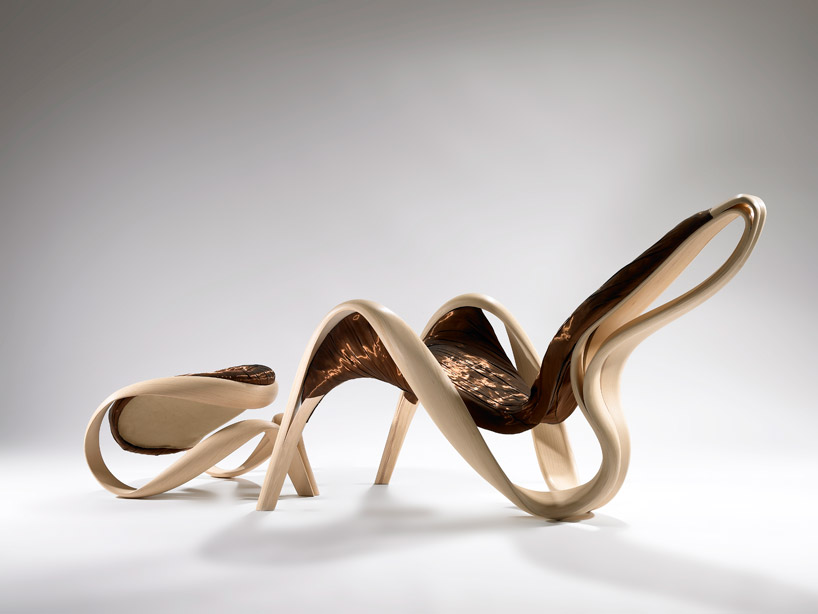
a collaboration between man and material, the form of each furniture piece is dictated by the existing grains and layers of the wood from which it is made.
read more
iida phone charger by jin kuramoto
by: Designboom - Weblog, 2011-10-21 08:32:00 UTC
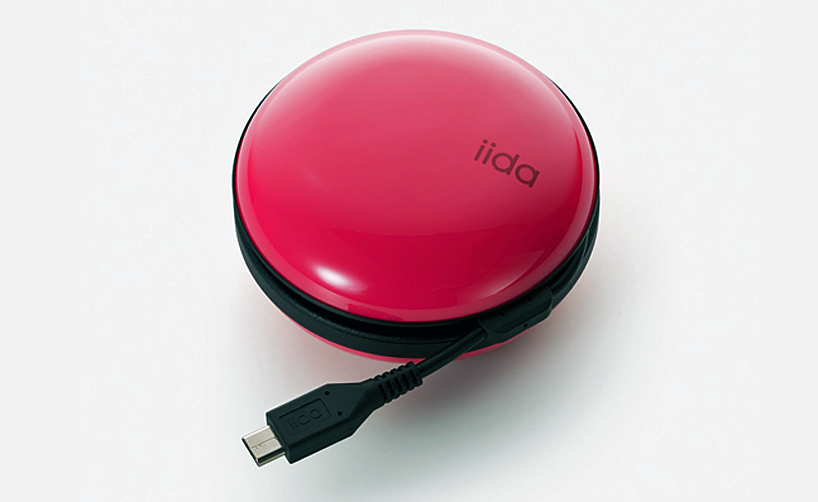
the AC adapter features a retractable cord to ease transport and prevent tangled wires.
read more
7 Interesting green products that run without electricity
by: Ecofriend, 2011-10-21 06:48:57 UTC
Bijendra Singh Rana:

Green living ….The only option…..
We are living in a world where energy consumption increases every second. Soon we may face acute scarcity of energy just like some of the infamous energy crisis faced by several nations now and then. It is imperative to reduce our dependence on electricity and look out for sustainable alternatives.
Reciprocating the same, many people around the globe have been working on creating devices that do not require electricity or any other non-renewable source of energy to operate. In present age of electricity, we present amazing innovations that will make your life green and help you save energy as well as money.
1. Love pot humidifiers

Love pot humidifiersLove Pot Humidifier are based on amazing technology that does not requires any electricity to function
Love Pot Humidifier are based on amazing technology that does not requires any electricity to function. Bacteria free, eco-friendly and beautifully designed, Love Pot Humidifiers was designed for Nanum Poject. Nanum is a charity initiative that will donate all the money earned from sales of these humidifiers to fulfill the educational requirements of needy children. Bring home this humidifier and fill your life as well as of some children with aroma and joy.
2. Pocket shower

Pocket showerThis tiny shower can hold around ten liters of water
Those who can’t bath without shower can breathe a sign of relief as Pocket Showers are here. With these one can take a shower in the middle of nowhere. Ultra-portable, this tiny shower can hold around ten liters of water. All you have to do is to attach it above your head and open up the shower head for a refreshing experience. What’s more, you can fill this gizmo with water and place it in sunlight. The black fabric of Pocket Shower absorbs heat and warms the water in no time that too without any requirement of electricity. Once you are done, pack this in small palm sized pouch and move on.
3. Thermodynamic cooler

Thermodynamic coolerThe innovative cooling system that doesn’t require any electricity to operate
Thanks to Rochus Jacob for introducing the innovative cooling system that doesn’t require any electricity to operate. This thermodynamic cooler utilizes the evaporating water to cool and preserve the food stored in it. Rochus used raw material like bio-plastics, clay and glass foam to manufacture this cooler. It has a wet glass-foam that evaporates to keep the temperature in control like a pond. You just have to refill this cooler with water in an interval of two days. The green indicator fitted at the exterior of the cooler keeps one informed about the moisture and water level within. Bring home this innovative Thermodynamic Cooler and help in sustaining the environment whilst saving considerable electricity cost.
4. Aqua drop maze game

Aqua drop maze gameThis one is the revised, non-electric version of classical maze game
This one is the revised, non-electric version of classical maze game. Available in different designs, the Aqua Drop Maze game has a super water-repellant coating within that allows the water to group together like a semi solid. The player has to gather all the drops together to form a single drop and navigate it through different paths to the hole. The direction of the water balls can be easily controlled by tilting the device to the direction you want it to move. The best thing is that you do not need any battery or electricity to play the game.
5. Solar powered UVonion

Solar powered UVonionDesigned by Yun Li
Bring home the solar powered UVonion that illuminates and sanitizes simultaneously. Designed by Yun Li, this onion shaped ultraviolet lamp with ultraviolet LEDs that can be used to illuminate your surrounding while saving considerable amount of energy. Just expose UVonion in daylight to absorb the energy from ultraviolet rays just like solar panels and it emits the same at night. This lamp is a ground breaking innovation that allows one to harness solar energy into electrical energy and reduce your energy.
6. Iiamo go self heating feeding bottle

Liamo go self heating feeding bottleThis bottle takes just four minutes to heat up
Welcome Iliamo, a baby milk feeding bottle that is self-heating in nature that too without any usage of electricity. Free from any BPA and PVC, this bottle takes just four minutes to heat up. This bottle has 100 percent disposable organic salt and water cartridge that actually heat the bottle. The design of this bottle is equally enticing, thanks to Karim Rashid, renowned Prada and Ralph Lauren designer. Iiamo Go Self Heating feeding bottle is available in different colors along with additional cartridges.
7. R2B2 Equipment

R2B2 EquipmentUnique design by Christoph Thetard
The R2B2 Equipment was recently showcased in Milan Furniture Fair, where it drew huge appreciation. It is a unique design by Christoph Thetard that allows the user to grind, blend and process food without using any electricity. This equipment utilizes manually operated flywheel that stores the energy to power it mechanically as well as directly.


 TED: Mike Biddle: We can recycle plastic - Mike Biddle (2011)
TED: Mike Biddle: We can recycle plastic - Mike Biddle (2011)
by: TEDTalks (video), 2011-10-06 15:10:03 UTC
Less than 10% of plastic trash is recycled -- compared to almost 90% of metals -- because of the massively complicated problem of finding and sorting the different kinds. Frustrated by this waste, Mike Biddle has developed a cheap and incredibly energy efficient plant that can, and does, recycle any kind of plastic.
 TED: Todd Kuiken: A prosthetic arm that "feels" - Todd Kuiken (2011)
TED: Todd Kuiken: A prosthetic arm that "feels" - Todd Kuiken (2011)
by: TEDTalks (video), 2011-10-20 15:09:49 UTC
Physiatrist and engineer Todd Kuiken is building a prosthetic arm that connects with the human nervous system -- improving motion, control and even feeling. Onstage, patient Amanda Kitts helps demonstrate this next-gen robotic arm.

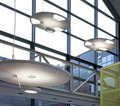
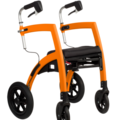


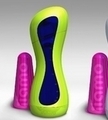





Comments by our Users
Be the first to write a comment for this item.